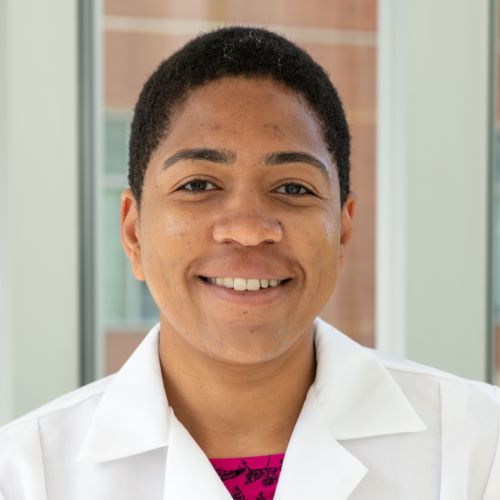Another Step Toward Healthcare Equity: Dr. Jennifer Jones and Colleagues Participate in National Study
By Lynn McCain | April 24 Healthcare disparities arise from multiple sources, some of which are cultural and rooted in historical biases. In health research, most study participants in the past have been of European descent. This delayed the identification of specific genetic differences that are found more frequently in non-Europeans, leading to misdiagnoses and inappropriate healthcare for those with these differences. One of these is the Duffy-null genotype leading to a Duffy-associated neutrophil count (DANC) that is lower than established reference ranges.
Healthcare disparities arise from multiple sources, some of which are cultural and rooted in historical biases. In health research, most study participants in the past have been of European descent. This delayed the identification of specific genetic differences that are found more frequently in non-Europeans, leading to misdiagnoses and inappropriate healthcare for those with these differences. One of these is the Duffy-null genotype leading to a Duffy-associated neutrophil count (DANC) that is lower than established reference ranges.
DANC is observed in individuals who do not express red cell Duffy antigens, or are Duffy-null. The Duffy-null genotype provides enhanced protection against malaria, giving carriers of this condition a survival advantage in regions where malaria is endemic and is frequently found in individuals of African and Middle Eastern descent. In the United States, about 70% of Black and 60% of Middle Eastern Americans have a Duffy-null red cell phenotype.
The Duffy-null genotype results in altered neutrophil activity, whereby these cells more readily exit the blood stream and move into tissues. This results in lower-than-normal numbers of neutrophils in the blood, or neutropenia. In populations without DANC, neutropenia is cause for concern as these individuals have less ability to fight off infections and may be symptomatic of a more serious underlying condition. This is not true for those with the Duffy-null genotype. They do not have a reduced ability to fight infection and have no symptoms of underlying disease. However, since their absolute neutrophil count (ANC) is low, they are frequently diagnosed with neutropenia, leading to unnecessary hematology referrals, costly and sometimes invasive neutropenia workups such as bone marrow biopsies, and anxiety. More concerning, DANC has been linked to reduced prescription of evidence-based, effective therapies, such as clozapine for schizophrenia.
Despite growing recognition of DANC in Black and Middle Eastern populations, these individuals experience insidious disparities in the health care system as the established ANC “normal” reference ranges fail to account for their Duffy-null status. To begin to address these disparities, clinicians must be better able to characterize ANCs seen in Duffy-null patients as pathologic versus normal, physiologic variants. A first step is to establish new ANC reference ranges for individuals with DANC.
The American Society of Hematology is leading a national initiative to establish new ANC reference ranges for individuals with DANC and the University of Michigan has been selected as a recruitment site. Dr. Jennifer Jones, Assistant Professor of Pathology specializing in Blood Bank and Transfusion Medicine, will lead the efforts on behalf of the Department of Pathology, and will work with colleagues in the Departments of Pediatrics and Internal Medicine. Jones and colleagues are excited to participate in this national effort to improve the quality of care for these populations. The Department of Pathology is partnering with ASH to support this effort through an internal Clinical Pathology Research Grant. Dr. Michael Bachman, Chair of the CP Research Fund Committee, added, “The Clinical Pathology Research Committee is thrilled to share in the support of this important work to establish new reference ranges for Duffy-associated neutrophil counts and address this health care disparity.”
As a member of the Absolute Neutrophil Count by Duffy Status Project consortium, the study team at the University of Michigan will seek to enroll healthy adults and children who self-identify as Black and Middle Eastern from Michigan Medicine clinics, identify those individuals with Duffy-null red cell antigen status, and record their ANCs to a centralized database. Following recruitment and data harmonization across sites, the consortium will recommend new ANC reference ranges for individuals with DANC. This should improve healthcare for patients with DANC and will be another step toward reducing healthcare disparities for patients in the United States.
 ON THE COVER
ON THE COVER
 ON THE COVER
ON THE COVER
 ON THE COVER
ON THE COVER
 ON THE COVER
ON THE COVER
 ON THE COVER
ON THE COVER
 ON THE COVER
ON THE COVER
 ON THE COVER
ON THE COVER
 ON THE COVER
ON THE COVER
 ON THE COVER
ON THE COVER
 ON THE COVER
ON THE COVER
